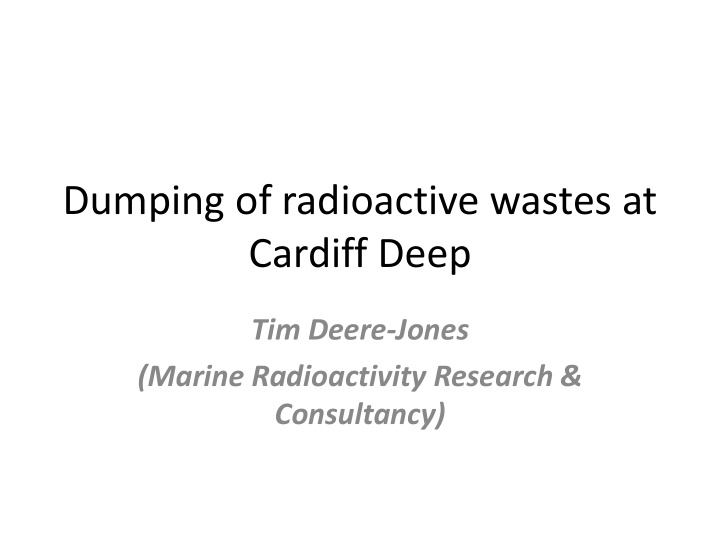



Dumping of radioactive wastes at Cardiff Deep Tim Deere-Jones (Marine Radioactivity Research & Consultancy)
Survey results: non-radioactive • Mercury, Cadmium, Arsenic etc +PAH, PCB, OH, BDE • “Action Level 1” exceeded for several subjects • Contaminant levels above level 1 “generally trigger further investigations of the material proposed for disposal at sea” • No action taken
Survey results: radioactive contaminants • Analysis of surface samples (0-5cms depth) • 3 “naturals” (Uranium, Radon and Thorium) • 3 man made: Cs 137, Co 60 and Am 241 (all discharged from Hinkley site over 5 decades) • But: 50+ radio nuclides listed in the liquid waste discharges from Hinkley reactors • Sampling regime inadequate
Surface samples??? • Core study elsewhere in Irish Sea area have shown that: • 0-5cm surface samples hold LOWEST concentrations of man made radioactivity • Increasing depths show increasing concentrations • At approx 20cms depth, concentrations are 5X higher than at surface • Use of “surface” samples inadequate
Breaches of standards? • Precautionary Principle re transport/movement of rad mats: dont engage in un-necessary transport/movement of rad ’ mats as this runs risk of increasing population and environmental doses • Precautionary Principle is also invoked when available scientific data is “ so insufficient, inconclusive, or imprecise as to make it impossible to determine with sufficient certainty the risk in question."
Bridgwater Bay = “sink” of sediments and associated pollutants • Bridgwater Bay sediments now a major deposit of “sequestered” rad ’ wastes after 50+ years of input • Radioactivity in BB has been subject to SLOW leaching due storm, tidal surge etc... • Dredge = major and rapid disturbance of settled and consolidated sediments • Disposal at Cardiff Grounds = major and rapid distribution of radioactivity into Welsh coastal waters • Radioactivity will initially disperse in water column • BUT then re-concentrate in sedimentary deposits (coastal mudflats along Gwent levels, estuaries, and tidal areas of south Wales rivers)
Human exposure to marine rad ’ in Wales • Studies have shown that marine rad ’ transfers across the Welsh coastline and impacts the terrestrial zone • Ceredigion coast (sea to land transfer via marine aerosols/seaspray in onshore winds)
Recommend
More recommend